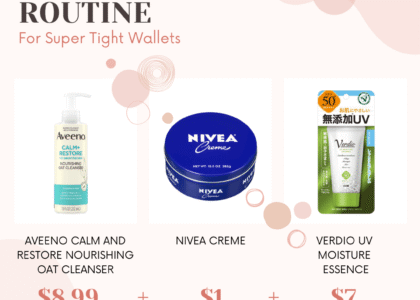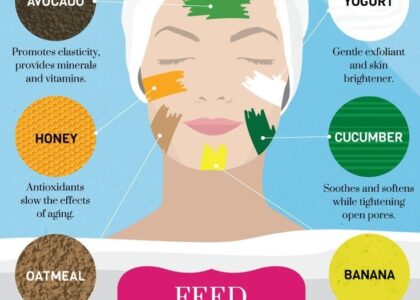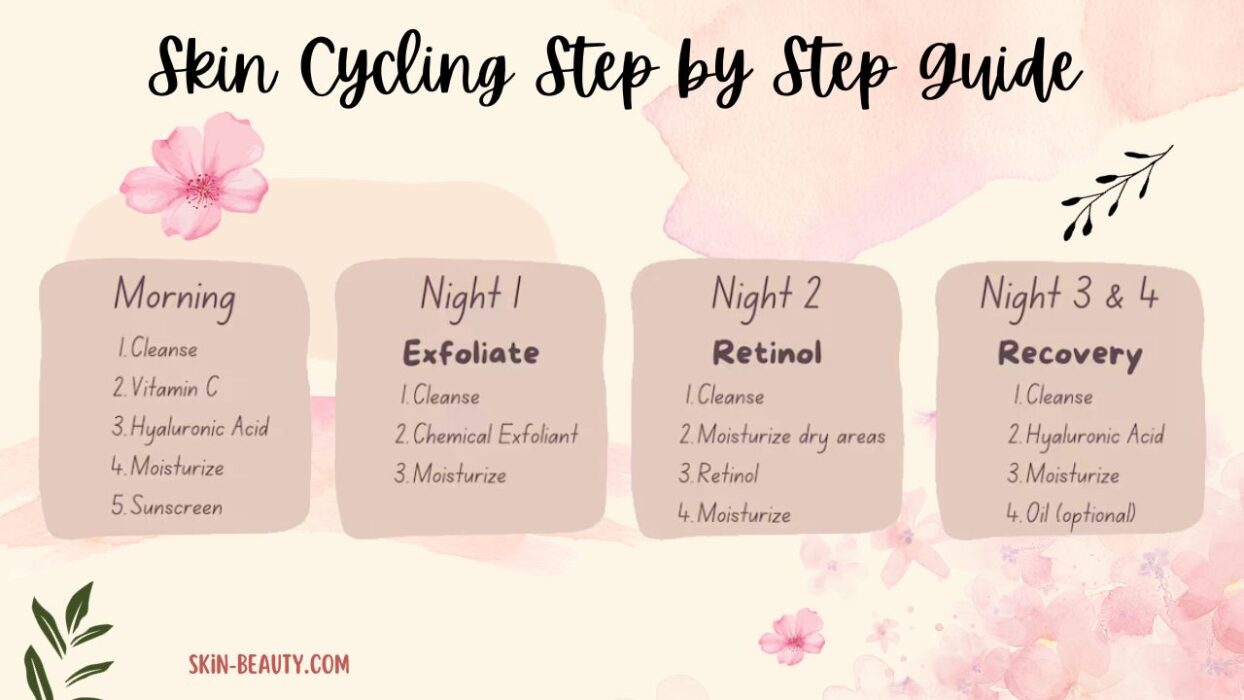Sensitive skin can be tricky to manage. One wrong product and you’re left with redness, burning, itching, or a breakout. If your skin reacts easily, stings after washing, or becomes inflamed with new products, you likely have sensitive skin—and you’re not alone.
The good news? With the right ingredients and a few smart choices, you can calm your skin, strengthen its barrier, and prevent irritation.
In this guide, we’ll cover:
- What sensitive skin really means
- Common causes of sensitivity
- Ingredients to love (and avoid)
- A simple skincare routine for sensitive skin
What Is Sensitive Skin?
Sensitive skin isn’t a clinical diagnosis—it’s a general term for skin that’s easily irritated by:
- Skincare products
- Environmental triggers (like cold, wind, or pollution)
- Internal factors (like stress or allergies)
Common signs include:
- Redness or blotchiness
- Burning, itching, or stinging sensations
- Dry, flaky, or tight skin
- Small bumps or rashes
Sensitive skin may be genetic, or it can develop over time due to a damaged skin barrier.
What Causes Sensitive Skin?
Several factors can make your skin more reactive:
1. Weak Skin Barrier
When the outermost layer (stratum corneum) is compromised, irritants and allergens can more easily penetrate.
2. Harsh Products
Using products with strong acids, alcohols, or fragrances can strip your skin and cause inflammation.
3. Skin Conditions
Rosacea, eczema, psoriasis, or allergies can contribute to sensitivity.
4. Environmental Stress
Pollution, UV rays, wind, and temperature extremes can aggravate sensitive skin.
Ingredients to Love for Sensitive Skin
When it comes to calming and protecting sensitive skin, gentle and nourishing is the way to go. Here are the best ingredients to look for:
1. Aloe Vera
- Soothes irritation and inflammation
- Provides lightweight hydration
2. Colloidal Oatmeal
- Anti-inflammatory and calming
- Helps relieve itchiness and dryness
3. Ceramides
- Strengthen the skin barrier
- Lock in moisture and prevent irritation
4. Squalane
- Hydrating, non-comedogenic oil
- Mimics natural skin oils
5. Centella Asiatica (Cica)
- Heals and soothes inflamed or damaged skin
- Popular in K-beauty products
6. Niacinamide (Vitamin B3)
- Reduces redness, inflammation, and sensitivity
- Strengthens the barrier and improves skin texture
7. Panthenol (Vitamin B5)
- Deeply hydrating and healing
- Supports repair of the skin barrier
8. Hyaluronic Acid
- Lightweight hydration
- Binds water to the skin without irritation
9. Shea Butter
- Rich in fatty acids and anti-inflammatory properties
- Great for dry, sensitive skin types
Ingredients to Avoid with Sensitive Skin
Certain ingredients are more likely to trigger irritation or allergic reactions, especially on sensitive skin. Avoid or use with caution:
1. Fragrance (Synthetic and Natural)
- One of the most common irritants
- Can cause redness, rashes, or stinging
2. Essential Oils
- Despite being “natural,” they can be harsh on reactive skin (e.g., lavender, peppermint, citrus oils)
3. Alcohol (Denatured or SD Alcohol)
- Dries out skin and disrupts the barrier
4. Harsh Exfoliants
- Physical scrubs with large particles (like walnut shell or apricot kernel) can cause microtears and inflammation
5. High Concentrations of Acids
- Glycolic, salicylic, and lactic acid may be too strong
- Use lower concentrations or gentler alternatives
6. Sulfates (e.g., SLS)
- Found in foaming cleansers and shampoos
- Can strip natural oils and dry out the skin
Skincare Routine for Sensitive Skin
A minimalist, fragrance-free routine is best for sensitive skin. Here’s a gentle daily plan:
Morning:
- Gentle Cleanser
– Non-foaming, sulfate-free - Hydrating Toner (optional)
– Aloe vera or panthenol-based - Soothing Serum
– Niacinamide or hyaluronic acid - Barrier-Repair Moisturizer
– Look for ceramides, squalane, or colloidal oatmeal - Mineral Sunscreen (SPF 30–50)
– Zinc oxide or titanium dioxide, fragrance-free
Night:
- Gentle Cleanser
- Calming Treatment or Serum (optional)
– Centella, niacinamide, or panthenol - Rich Moisturizer or Overnight Cream
– Shea butter, ceramides, or peptides
Weekly Add-Ons (Optional)
- Hydrating mask: 1–2x/week
- Mild exfoliant: Enzyme exfoliants or polyhydroxy acids (PHAs) are better tolerated
- Face oil: Rosehip or squalane (patch test first)
Tips for Managing Sensitive Skin
- Patch test every new product before full use
- Stick to fragrance-free and hypoallergenic formulas
- Don’t over-cleanse or over-exfoliate
- Avoid hot water on your face—use lukewarm instead
- Choose minimalist routines with fewer steps
- Use products with pH between 4.5–5.5 (skin’s natural range)
When to See a Dermatologist
If your skin is persistently:
- Burning or stinging
- Peeling or flaking excessively
- Red and inflamed
- Reacting to every product you try
…it’s time to consult a dermatologist. You may have rosacea, contact dermatitis, eczema, or another underlying issue that needs targeted care.
Summary: Ingredients to Love and Avoid for Sensitive Skin
| Gentle Ingredients | Irritating Ingredients |
|---|---|
| Aloe Vera | Fragrance (synthetic/natural) |
| Colloidal Oatmeal | Essential Oils |
| Ceramides | Alcohol (denatured) |
| Squalane | Harsh exfoliants |
| Niacinamide | High-strength acids |
| Panthenol | Sulfates |
| Centella Asiatica | Benzoyl peroxide (in high %s) |
| Hyaluronic Acid | Strong retinoids |
Final Thoughts
Sensitive skin requires kindness, consistency, and care. With the right ingredients and a gentle routine, you can soothe flare-ups, strengthen your skin barrier, and enjoy healthy, radiant skin.





